#American martial arts action film
Explore tagged Tumblr posts
Text

#Bloodsport (1988)#Bloodsport#1988#80's#80s#JCVD#Jean-Claude Van Damme#my gif#gifs#my edit#gif#American martial arts action film#martial arts action film
45 notes
·
View notes
Text
No retreat, No surrender III, also known as 'Blood brothers' in the year 1990
#noretreatnosurrender#blood brothers#action#action cinema#action choreography#fight scenes#fight scene#kung fu cinema#kung fu movies#kungfufilms#martial arts#martial arts movies#action movies#action film#american movie#american film#1990s#1990saction#1990s nostalgia#fights#fightscene#fightscenes#live action
2 notes
·
View notes
Text
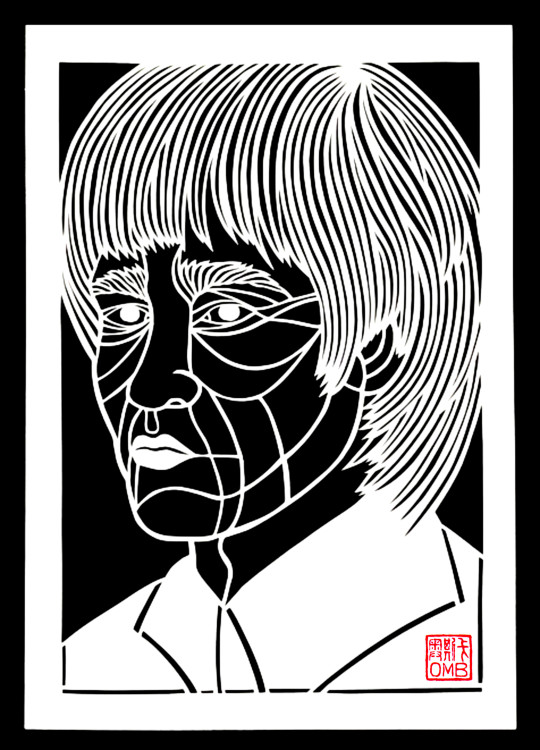
Bruce Lee- Chinese-American martial artist and actor. (art: papercutting)
#bruce lee#hong kong#macau#china#actor#papercut#papercutting#paperart#papercraft#paper art#paper#martial arts#movies#films#action stars#chinese american#papa osmubal
3 notes
·
View notes
Text

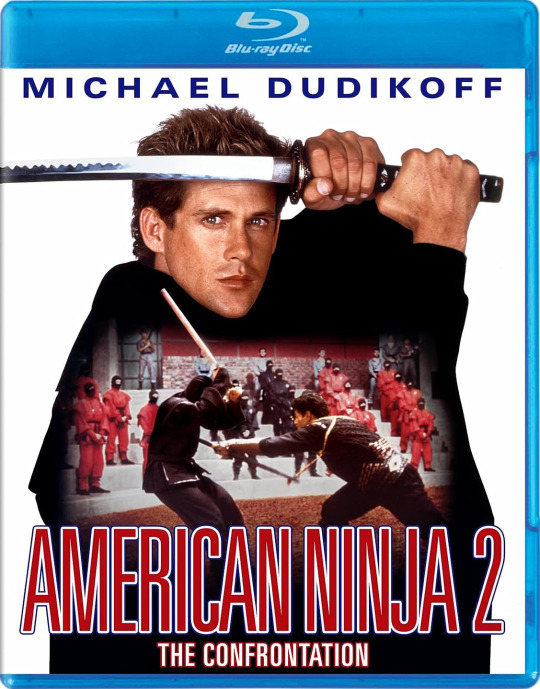
American Ninja and American Ninja 2: The Confrontation will be released on Blu-ray on October 31 via Kino Lorber. Produced by Cannon Films, the martial arts films star Michael Dudikoff.
1985's American Ninja is directed by Sam Firstenberg (Ninja III: The Domination) and written by Paul De Mielche. Guich Knock, Judie Aronson, Steve James, John Fujioka, and Tadashi Yamashita co-star.
1987's American Ninja 2: The Confrontation is directed by Sam Firstenberg and written by Gary Conway (Over the Top) and James Booth. Steve James, Jeff Weston, Gary Conway, Michelle Botes, and Larry Poindexter co-star.
Special features for both titles are listed below.
American Ninja special features:
Audio commentary by director Sam Firstenberg and stunt coordinator Steven Lambert
Audio commentary by director Sam Firstenberg, moderated by filmmaker Elijah Drenner
A Rumble in the Jungle: The Making of American Ninja
Theatrical trailer
Stationed in the Philippines, 18-year-old U.S. Army private Joe Armstrong (Michael Dudikoff) is escorting a supply convoy when it is ambushed by rebels—one of whom he recognizes as a Black Ninja warrior. Instinctively, Joe defends himself using the esoteric martial art of Ninjitsu—an ability that puts him under suspicion by his commander and fellow soldiers. Alone in his fight against corruption, the boy finally discovers the secret of his mysterious past—a secret that pits him against the evil Black Star Ninja (Tadashi Yamashita) in the ultimate martial arts battle.
Pre-order American Ninja.
American Ninja 2 special features:
Audio commentary by director Sam Firstenberg and stunt coordinator BJ Davies
Audio commentary by director Sam Firstenberg, moderated by filmmaker Elijah Drenner
An American Ninja in Cape Town: The Making of American Ninja 2
Theatrical trailer
When U.S. Army Rangers Joe Armstrong (Michael Dudikoff) and Curtis Jackson (Steve James) go on a Caribbean mission for missing Marines, they find themselves matching their deadly Ninjitsu skills against the elite Ninja forces of The Lion (Gary Conway)—a psychotic drug lord who genetically alters his fighters into superhuman martial arts killers! Learning that four kidnapped Marines are about to undergo The Lion’s inhuman transformation, the Rangers infiltrate his island fortress—and launch into an explosive battle against a horde of mutant Ninja warrior-clones!
Pre-order American Ninja 2: The Confrontation.
#american ninja#american ninja 2#michael dudikoff#steve james#cannon films#kino lorber#dvd#gift#80s movies#1980s movies#martial arts#martial arts movies#sam firstenberg#judie aronson#80s action movies
6 notes
·
View notes
Text
On May 13, 2022, New York Ninja and American Ninja were screened as a double-feature on TCM Underground.


Here's some new John Liu and Michael Dudikoff art!
#tcm underground#new york ninja#american ninja#john liu#sam firstenberg#michael dudikoff#double feature#action movies#ninjas#ninja movies#action film#80s action movies#rediscovered film#1980s#martial arts#martial arts film#movie art#art#drawing#movie history#pop art#modern art#pop surrealism#cult movies#portrait#cult film
1 note
·
View note
Photo
American Ninja 2: The Confrontation (1987)
Micheal Dudikoff as Joe Armstrong, American Njnja

Kuji-in meditation
#American Ninja#cannon films#80's aesthetic#80's style#ninja#Micheal Dudikoff#retro#retro cinema#b movies#action movie#martial arts#George S. Clinton
99 notes
·
View notes
Text
reasons why newsies (1992) was a significant turning point in christian bale's career
it's his first american role, which kickstarted his career of playing many american roles such as patrick bateman and batman, which are iconic (but not as iconic as jack kelly)
not only did he have an accent that wasn't his in this film, but it also wasn't a standard american accent. this gave him experience in taking on different accents
for his preparation to play jack, christian went to martial arts and dance classes. this would be a foundation for his most popular action movie role, batman, and others
he also had to ride a horse in this movie and that gave him experience for his future roles in prince of jutland, 3:10 to yuma, and hostiles which are movies where he had to ride horses
conclusion:
newsies is the most important movie in cinema history and this is one of the reasons why. god knows where we or christian bale would be if newsies never happened
104 notes
·
View notes
Text
Race, Live-Action Casting, and Ninjago
I'll start by saying something everyone can agree on.
No Chris Pratt.
Now that's out of the way I want to state my purpose for this rant. It's to spark discussion. I want to hear other people's ideas and perspectives. I'm one Asian American out of literal billions. I know after typing everything out I'll feel bad, but this feels like a discussion the fandom needs to address. Every perspective is worth considering and thinking through.12
I'm not worried about the casting. Warner Bros. is a big studio that doesn't want any negative press. At least, Kai and Nya are going to be Asian. I'm worried about the other Ninja, mainly Lloyd. But I think the studio doesn't want to be cancelled, so that's not my number one worry. My number one worry is Garmadon. If Garmadon is in the movie, will his skin be literally black? his can be sidestepped if Garmadon isn't included period. But the Hagemans love their emo dad. Still, I don't want blackface Garmadon.
My theory is the casting will have a similar model to what Avatar did in it's live action. There were white voice actors, now they're played by a diverse cast. Kiawentiio is amazing, but not as tan as Katara was in the animated series. (That's a discussion within itself) There was a controversy with Ian Ousley. I'm not going to get into those topics, but they did happen.
However, the worry for many comes from the fact Ninjago is more racially ambiguous than Avatar: The Last Airbender. Almost all the characters-with exceptions being the Water Tribes and Sun Warriors-are Asian. Avatar: The Last Airbender has characters with a variety of skin tones and facial features. Ninjago has almost all of it's characters with yellow skin. Which is typical for LEGO, but feels iffy in an Asian inspired world. The fact everyone has yellow skin lends to an almost race blind world. However, names come from countries. Completely human characters have blond/ginger hair. Lloyd and Master Wu have blond hair. Master Wu is especially weird because he has the aesthetic of the Hollywood wise old Asian martial arts teacher there to help the protagonist. But he's blond.
In a cartoon I can suspend my disbelief. In the show I can't see facial features. Everyone in Ninjago has the same eyes, unless if you're a robot, one of the very few women, or Lloyd. I can live with this in an animated show from the 2010s.
In live action films, there are close-up shots. People will stand next to each other. I know what real life people look like when I'll see the movie. This shouldn't matter to me. I shouldn't care so much, but the history of whitewashing roles in media is too vast. We interpret the world through race.
White is the default in the US. Examples being Ghost in the Shell Warriors TV series. Asian roles for media set in Asia for Asian roles are cast by white people with white people since 1961.
What I want to know is the world of the live action going to be Asian inspired? And the better question: should it?
I don't know.
Ninjago since day 1 has had a tenuous at best relationship with race. It is clearly in an Asian inspired world. Everyone knows Ninjas come from Japan. However, it's just an aesthetic.
The worldbuilding is very Western. If we compare to Avatar again, there is no use of any Asian philosophy in Ninjago. Avatar is chalked full of allusions to Buddhism and Japanese Imperialism. But, Avatar is a more well thought out show than the show where one of the main characters gets sent into another dimension and becomes evil, violates the Geneva convention then is given no acknowledgement and I hate it.
Ninjago when giving us culture that seems Asian inspired to me fails spectacularly. (The Kabuki from Chen's Island. That's a Tumblr rant within itself) The most obvious example being the yin and yang marriage proposals. They have Google! The writers could've gone down an internet rabbit hole for a variety of cultures. But we have this clumsy, "Will you be the Yin to my Yang?" It's stupid and I hate it.
However, Ninjago in the Wildbrain era started to move away from the Asian aesthetic. One could make the argument it started in Rebooted, but I'm saying Wildbrain era to keep this post short. We go to a pyramid in Secrets of Forbidden Spinjitzu. We meet the Ice people from the Never Realm which I think are inspired by the Inuit. I'm not too sure.
Dragon's Rising has done away with any resemblance to Asian culture. Sora is Japanese name, so maybe? But all the resemblance is from the old show. It's a fantasy show. They are a soft reboot. They could make their dragons look like literally anything in this soft reboot and they stick to the Western style ones. It's this big fantasy world, why am I not seeing any allusions Asian folklore?
But can't I blame Ninjago when they fumble so hard when they try. It's a lose lose situation. But research isn't worth it. Is a culture too inconvenient to even research? Because everything seems absorbed from other pieces of American media. Yin Yang has nothing to do with marriage-at least to my knowledge. It has to do with Daoism. There is no research or attempt. The show hasn't done a legitimate attempt in it's full run and that's sad.
We're seeing that when the Hageman brothers write they don't shy away from the Asian aspects of the world. Or maybe there was less understanding of Asian representation when the show first aired so they could do whatever they wanted. (And Wildbrain and Dragons Rising are more popular so have higher stakes if they fuck up too bad) This is racist, but it isn't coming from hatred. It's coming from ignorance. If this came from hatred why make a show about ninjas?
The Hageman brothers have demonstrated ignorance in their writing. I've been saying Asian instead of specific countries because everything is so monolithic in the show. It would be amazing to have this world for a big franchise shown to kids around the globe. (Especially to Americans who might not watch a show with an authentic cultural world if it didn't tie to Ninjago) But that's not going to come from them. It's never going to come from them.
Authentic Asian representation was lost when the writers were picked. I have no doubt there'll be sensitivity readers, but there'll most likely be a cultural erasure. I'm not mad at the Hagemans. I'm not even mad at Hollywood. But I'm disappointed in Warner Bros.
Please respond with your own opinion. If you agree or disagree with any of my points. Hell, if I said something racist let me know. I want this post to get people thinking and talking about their own opinions on casting and writing.
#ninjago#lego ninjago#kai ninjago#jay walker#kai smith#lloyd garmadon#asian representation#dragons rising#ninjago live action#hageman brothers#ninjago nya#ninjago lloyd#nya ninjago#ninjago jay#ninjago zane#ninjago discussion#race#discrimination#yellow face#whitewashing#casting#anxieties#maybe all of them should just be filipino#they could keep their first names and it'd make total sense#live action ninjago movie#live action#live action remake#race is complicated#diversity is complicated#I don't think I agree with everything I wrote
28 notes
·
View notes
Text
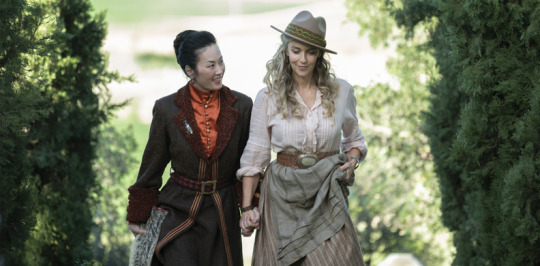
People are sleeping on this queer representation + show in general
As a queer Asian American I feel an obligation to get more people to know about Warrior (2019) which is streaming on MAX (HBO), but had originally aired on Cinemax.
This show is based on an original concept and writings of Bruce Lee and is executive-produced by his daughter, Shannon Lee. It is set in 1870 San Francisco and bases a lot of the story and characters on historical figures during/around the Tong Wars. It's a riveting, action packed series that's sure to please anyone who enjoys old school martial arts films, westerns, dramas, and more.
But that's not it. The show has an interracial queer relationship that too many people don't know about. This will now go into spoiler territory. So if this post has already convinced you to go watch it just from the first image, then don't read on.
You first get to see Ah Toy and Nellie Davenport interact at the beginning of season 2. Ah Toy, from season 1 is already canonically bisexual. From the get go it is evident that they are enemies as Ah Toy is an influential madame in Chinatown who runs a brothel. While on the other hand Nellie is a rich widow who has aided the police force in raids throughout Chinatown to shut down crib brothels. In time you'll learn that they're both badass motherfuckers, but I don't want to spoil that for you!
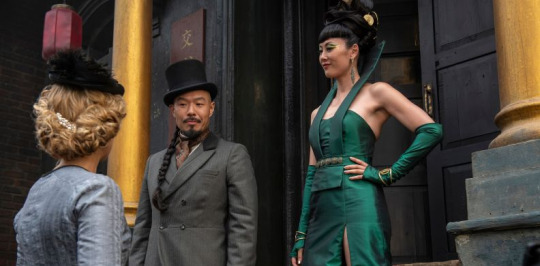
As the season progresses, they find that they aren't as different as they originally thought. Falling straight into the enemies to lovers story path. So here's a still from season 3 of these wonderful bi women to encourage you all to check out Warrior.
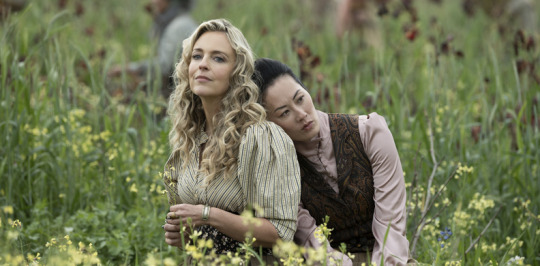
Still not convinced? Look at them!
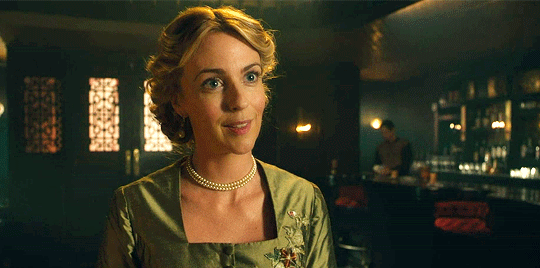
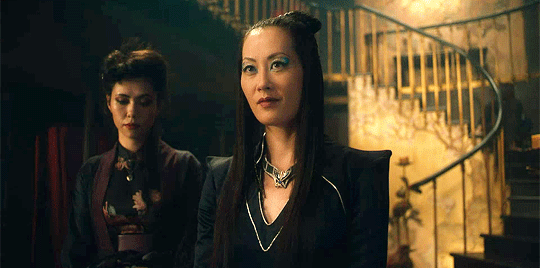
Not enough? How about now?

No? How about now?

Well then here's my last try...

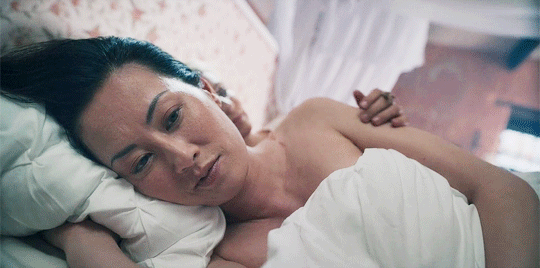
I have now done my duty to try and get more people to watch this show and support these women. It is out of my hands now.
PS: If you do watch it, come spam my inbox cause I wanna talk about it! Also if you like fanfic, then subscribe to my AO3 cause I'm already working on some fics for them :D
PSS: There's also straight interracial relationships and gay representation too.
#ah toy#nellie davenport#warrior#warrior 2019#queer representation#bisexual#ah toy x nellie davenport#seriously... go watch it!#I need more people to talk about it#I need more fan content#Queer#big thanks to booasaur for having made these gifs already and saving me a shit load of time
218 notes
·
View notes
Text
Criticism of Blue Eyed Samurai
Well, I just watched Blue Eyed Samurai. Been spotting several positive clickbait thumbnails of it, so even though I didn't have high expectations based on the trailer, I gave it a go. And well, it was what I feared it was. I still enjoyed it though! And it's an engaging story, just not what I wish it was. Anyways, I wrote a comment on Reddit about it, which I thought I'd repost here.
Edit: I ended up going in and reordering some paragraphs under headings, as people on Reddit replied to by comment. Noticing people are nitpicking the historical accuracy of my commentary, which wasn't really what I was concerned about. It's more that certain cues in these stories make me expect certain things.
The main point of much of this text is to look into what makes Blue Eyed Samurai a noticeably American story, by comparing it to other jidaigeki stories with a similar setting made for and by Asian people, and stories set in Asia made by Americans (for Americans).
🚧 NB! I'm still working on the text. Text marked in cursive are just notes, so please ignore them for now! 🚧
Asian stories
So, this isn't the first time we've gotten an Asian story told by Americans (for Americans). And that in of itself doesn't necessarily make the show unwatchable. Beyond the cases of whitewashing and yellowface in Hollywood, we can also find a few love letters to Asian media.
For China, we have Kung Fu Panda, a love letter to Kung Fu movies with a Chinatown aesthetic. For Asian ethnicities overall, we have Avatar the Last Airbender. And for Japan, we have stories like the Ghost of Tsushima and Shogun.
As a period drama fan, what I expect coming into these shows are generally other pieces in the same genre, that is Asian stories told by Asians. Perhaps due to the lack of any relevant Asian American genre. In the case of Blue Eyed Samurai, I was expecting a jidaigeki more in the lines of Azumi, Oshin or Princess Kaguya. However, I felt that Blue Eyed Samurai fell short, even by the standard of other Asian stories told by Americans for Americans.
Overall, the story's theme is two fold: action and feminism.
Action and martial arts

While Blue Eyed Samurai throws around words like samurai and honor, it doesn't appear to actually understand what these entail. Instead, it feels like it only focuses on the superficial badassery of it. In contrast, Ghost of Tsushima did a great job with its Japanese localization. Although some parts was a little bit off still, they salvaged this by centering their themes around bushido culture and made references to terms used there, and the visuals references Japanese aesthetics of the transient seasons and impermanence, which is commonly used in haiku poetry. It features seasonal environments such as ginko leaves, reed, maple, and spider lilies to mention some. The same can be said for Shogun, which is more about the tension being lost in translation, and where especially Mariko recited actual Japanese poems at several occassions.

Meanwhile, Kung Fu Panda also has the tropes and artefacts of Chinese wuxia story, but it is ultimately based on Chinatown. A theme park-esque idea of China designed by and to cater to white people, as a Chinese American defense mechanism. Yet, it stands on its own as an American love letter to Chinese kung fu films.
In the west, many use Kung Fu Panda as an argument for successful orientalism. However, Accented Cinema points out, it may have more to do with China's own failure in representing themselves, and that Kung Fu Panda's lesson was just what China needed at that time: To stop doubting and to learn to love themselves. Even in the face of the traditional Chinese fantasy genre (wuxia and xianxia) losing foothold in Asia, they can still stay themselves as a new generation reinvents the genre. And the new stories coming out of China seems to have taken this classic hollywood message to heart.
I'll use this opportunity to shoutout some stories by China to come out of this new era: The Legend of Hei, the White Snake, The Untamed, Black Myth: Wukong, Genshin Impact, etc.

In contrast, Blue Eyed Samurai has the same attention to detail when it comes to the artifacts of a jidaigeki story. But it falls short, because it lacks in as meaningful a message as Kung Fu Panda had, and somehow lacks in the tropes (or whatever it's called?) that you'd expect to see in a jidaigeki. Instead, it focuses on superficial badassery and western feminism, and it feels like it clearly caters to white people's ideas and desires.
But overall, great choreography and compositing, engaging story and characters ... Blue Eyed Samurai is good, but does veer into the uncanny valley for me, which I know was an issue Asians had with ATLA. Guess I felt it a little bit more with Blue Eyed Samurai due how much (unrealistic) violence and (meaningless) sex is glorified, and made me question what exactly the overall moral message of the story was supposed to be beyond simply "revenge plots are cool but also destructive." As somebody else said, it's giving "guts and tits for the people."
I was hoping for something like Azumi
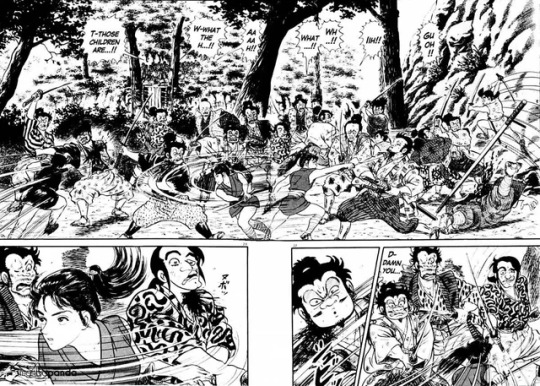
I do not mean that I wanted Blue Eyed Samurai (BES) to romanticize bushido and samurai. However, I did want it to explore these concept, because they made such a big deal out of it. The closest comparison I can make and what I was actually hoping for when going into BES, was something more like the manga Azumi.
The main character of both series, Mizu and Azumi, are similar in several aspects. Both are orphaned women who grew up to become fearsome assassins, whose sworsmanship is so incredible that they're able to fight off hordes of men singlehandedly. Additionally, both are mixed race, though where Azumi only has blue-ish eyes, Mizu has actual blue eyes. Additionally, both work as assassins during the sakoku policy, though while Azumi lives around the time of Tokugawa Ieyasu in the 16th century, at the start of the policy, Mizu lives further along in the 17th century.

Azumi is a gritty look into (among other things) both shinobi and samurai that does not romanticize either, and has won an award for its exploration of these concepts in relation to buddhism. In fact, everyone in Azumi suffers. The only one who is perhaps glorified is Azumi, who many critics compare to a boddhisattva.
Throughout the story, Azumi has learnt to not be too attached to earthly comforts, but still suffers because of her attachment to her companions. As Azumi completes her pruning missions for her boss (the Buddhist monk Tenkai), she accumulates a lot of bad karma in the form of endless waves of people pursuing her for either revenge, the bounty on her head, the thrill of defeating a master swordswoman, etc. Because of it, 90% of her closest companions SPOILER die, and many of her friends are raped or permanently maimed, and has to deal with the trauma and practical inconveniences of it. Often because they are caught in the crossfire between Azumi's targets or those who pursue her.
By the end of the story, Azumi still ends up making new companions like usual and her boss continues wanting to send her on pruning missions. But she decides to leave them all behind, so that those she cares about will not be affected by her bad karma again. She knows she will have to stay on the road indefinitely and will never really be able to enjoy the comforts of settling down, because of her pursuers. The series makes the buddhist argument that earthly attachment in general causes suffering, and Azumi is enlightened by abandoning those attachments and by facing her karma, although that does not mean she will not end up with a violent death. The story ends openly with Azumi wandering off into obscurity.
Mizu is not a samurai
We could argue that she is a ronin, but then she'd technically must've been serving a lord as a samurai in the past. She should be at least be a tiny bit concerned with chivalry; At least enough to discuss or talk about it, which we know isn't the case. Mizu is closer to being a shinobi/ninja, since her goal is to assassinate her 4 maybe fathers. Another thing Mizu shares with shinobi is that both are often criticised by samurai because of their penchant for ambushes and lack of concern for bushido / warriors code. Yet she breaks the mold of being a shinobi, since she doesn't really sneak around in (civilian) disguise and will openly brawl her way through a dojo and into a fort. In this aspect, Azumi is much more like a shinobi.
While Mizu's motivation is simply revenge for the injustice she and her mother suffered at the hands of the gaijin faction, in Azumi the motivation is to prune the country like a bonsai tree off individuals which may threathen a new age of peace, and prevent the country from slipping back into the civil war that marked the Sengoku period.
But where characters in Blue Eyed Samurai is heavily protected by plot armor, allowing Mizu to be an almost invincible pin cushion, no one is safe in Azumi and injured characters requires months to recover and heal from cuts.

While writing this, I recalled that in episode 5, they interjected a story about a samurai marrying and fathering a child with a woman who descended from an enemy clan. He kills both her and their son, which turns her into a onryō. Mizu being an Onryō works, but I am left questioning how this fits into the story beyond its symbolism, as there's been no explicit supernatural elements in the story. Mizu is bullied for being the (devil) spawn of a quote "white devil" in childhood, I think it would be more interesting if they called her a "white ghost," since onryos (which could represent Mizu) are a type of vengeful female ghost. Furthermore, Taigen often compares Mizu to a dog, esp. when she does not live up to the samurai standards he holds her to. Not sure where that fits in either..
Orientalism
So the statement about samurai criticising shinobi was called out as orientalist. This was my reply:
As for orientalism, I guess Blue Eye Samurai is being orientalist then, which I was kinda feeling while watching but didn't really put into words. It's pretty stereotypical to connect Japanese with honor and samurai after all, contributing to why I felt the show was very American.
In the sense of samurai simply meaning warrior, then we can consider Mizu a samurai. But Taigen (and Akemi) connects being a samurai with honor and complains about fair play. By making this connection, he invokes bushido/chivalry and excludes people who ambush others like assassins from the definition of being a samurai, and by extension criticises assassins like ninjas for not shying away from "dishonorable" ambushes. To restore his honor, Taigen wants to arrange a formal duel and even writes up a challenge letter (hatashijou), which makes sense in terms of the dojo trope. But well, the series does contradict itself a lot in favor of cool one liners, and what it means to be a samurai or knight has changed throughout history.
Time period
Some people began nitpicking the historical accuracy of my commentary, which wasn't really what I was concerned about. I am open to artistic liberty. However, with BES it was a little bit harder, since they made so many historical references and leaned into the jidaigeki genre, but then broke it in ways that came off as uncanny to me. Looking back, I guess this uncanny feeling was the orientalism letting itself be known, though I couldn't put it into words back then.
As jidaigeki is a subgenre of historical stories, certain cues does make me expect certain things. Like when I see an English-speaking gaijin with such a vile attitude as this as the antagonist, I would make the connection that this story is probably set sometime after the Americans forced Japan to open up for trade in the 1800s. Yet this expectation is then contradicted when I learn that no foreigners are allowed in Japan yet due to the Sakoku policy, which makes me wonder what this Irishman is doing here all alone centuries too early and how he even managed to climb to such a powerful position while being so isolated.
Gaijins as antagonists
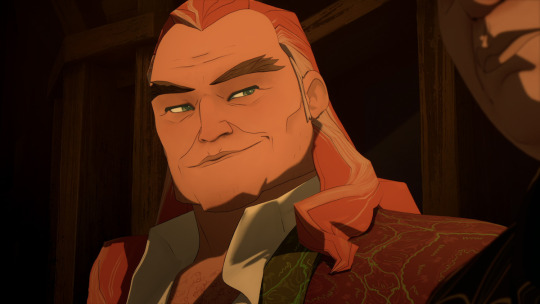
Why an Irishman as the gaijin antagonist? It'd make more sense if it was a portuguese or dutch. If Blue Eyed Samurai is set in 17th century Edo Japan, it's a long time off when the Americans forced Japan to put down the sakoku policy, and even then, why Britain/London? If anything, Japan and Britain liked each other enough later on to form an alliance for their shared fear of Russia.
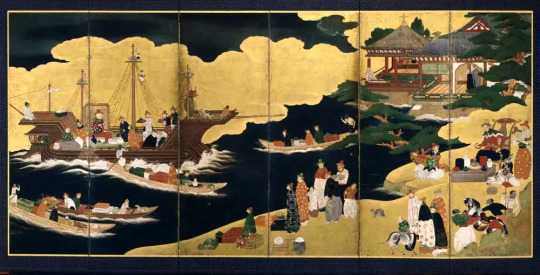

Why not other colonial powers who were actually active in Japan and Asia overall at the time (the Dutch) or the ones who caused Christianity to be banned during the sakoku (the Portuguese).
My first thought of a precedent goes to Konishi Shizune, the Christian revolutionary leader in Azumi who's also mixed race like Azumi, which is based on the historical Amakusa Shiro.
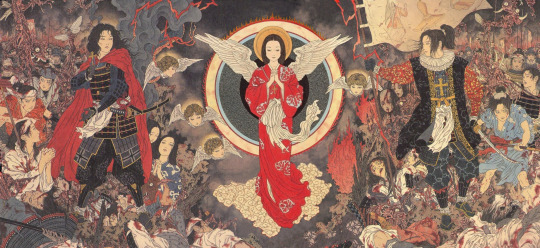
(Depictions of Gaijins: Americans during postwar Japan in Hajime no Ippo. Senator Armstrong in Metal Gear Solid)
Japanese in Europe
With Mizu heading to Europe, I came across people discussing the plot armor and how Mizu wouldn't stand a chance against the guns nor London police. It came off as kind of white supremacist, and the entire thread was locked because of unsolicited opinions from outsiders.
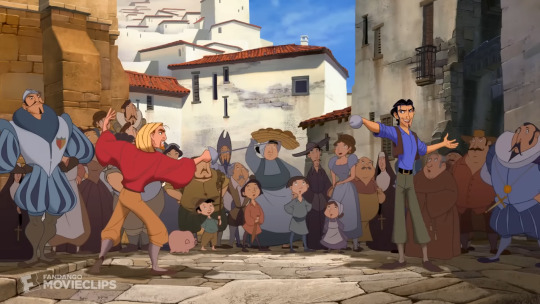
To be fair, Japan had guns too at the time. According to Netflix themselves, Blue Eye Samurai takes place in the 1600s. If that's the case, it means that the guns were mostly muskets, rifles and pistols which took time to load, so people did still use swords even in Europe. And only a century earlier in the 1500s, when Dreamwork's El Dorado is set, people would still use firearms and crossbows side by side. Oda Nobunaga also used firearms in his own warfare during the sengoku period.
Also, the police didn't exist yet, since the UK police were created in the late 1700s. As for the London battalion or royal guards storming her, it'd either amount to when she was stormed by the hand claw guys. The plot armor in the first season was a lot imo even then though. But sneaking up on them depends on the terrain and context, so I can see it happening.

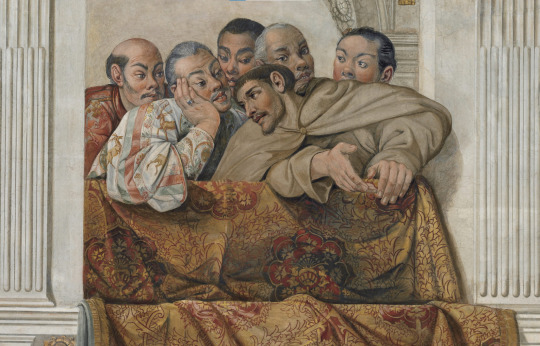
Furthermore, it's not unrealistic for Japanese people to travel to Europe, because there's historical precedence for this. In 1613, Hasekura Tsunenaga was sent on a diplomatic mission to negotiate with the pope and the king of Spain, and some of his men even stayed behind to form the Japon clan in Spain. The expedition took 7 years, and ironically enough, once he returned, christianity had already been banned in Japan. The people who still kept the Christian faith in spite of this came to be known as kakure kirishitan.
Debauchery means it's for adults ..
The way characters (esp. Mizu) will throw out badass oneliners as if on a treadmill, only to contradict exactly what she said as short as 5 seconds later does mess with my suspension of disbelief.
The story also goes into prostitution and patriarchy, though it also felt superficial to me. If anything it feels like an excuse for fan service, similar to Game of Thrones in a sense. Like they know that sex sells, and that's what "the audience really wants." That said, again I enjoyed both GOT and Blue Eye Samurai, even though some may laconically break the former down to "dragons and tits" and the latter to "guts and tits".
Token representation
Mizu's apprentice was born without hands, which could have brought about an interesting exploration of disability. But instead, he's relegated to being a quirky sidekick and comedic relief.. Even though he's disabled, he is shown to act like other people who are not, except when it's in the favor of a joke. Ringo comes off as somebody who does not need help and is able to manage without anybody. To me, this comes off as dismissing the struggles that disabled people go through to remain high-functioning in a society that is not designed for them, which I again struggle to suspend my disbelief for.
I had hoped that BES would feature disabled characters as well as Arcane did: Viktor, Sevika, and Isha are all great characters, who are shown to fully work with their disability throughout the story. For example, Sevika loses her arm in Powder's explosion, and replaces it with a powerful mechanical arm fueled by shimmer (drugs). However, when her arm is put out of action, she will retreat as she knows she's at a disadvantage. And Isha is seemingly deaf and mute, though it does not stop her from bonding with other characters and rushing into action. And yet, she is still a child that needs protection, and somebody who struggles to communicate at the same level as a fully able-bodied character. These characters are badass and amazing, even if they're very clearly not invincible and clearly show that they need accommodations.
BES is an American story
Blue Eyed Samurai has all the visual motifs of a Japanese samurai story (jidaigeki), but the tropes and logic is extremely American. It does get the artifacts and set dressing of a jidaigeki story right (surprisingly accurate at some points), which is why it triggered the uncanny valley for me sometimes. When certain artifacts and set ups appeared, I expected it to follow certain tropes I'm used to from jidaigeki, but it didn't really do that.
Patriarchy and gender roles
While I understand and appreciate your critique, I don't think the narrative is grounded in realism. It's more like expressing the need that women do have to see themselves in the shoes of a physically invincible protagonist. Also the motivation isn't simply revenge - what has happened to Mizu has convinced that her very existence is suffering. She's internalized the hate to an extent that it no longer matters whether she lives or dies. She will slowly change as a person and her motivations will also change, which I hope we get to see . All the characters are somewhere trying to rebel against their gender roles, and that I feel is the 'message'. Also as far as the right antagonist to show goes, Fowler seems an indictment of British colonialism a few centuries too soon, but his attitudes aren't unfamiliar. At all.
Blue Eyed Samurai doesn't explore the concepts it references or markets itself with, but seems to throw them around because samurai and honor sounds cool and is a stereotypically Japanese/Sinosphere thing. Instead it'd rather explore gender roles and patriarchy. And the character Blue Eyed Samurai primarily uses to explore these themes with isn't the titular protagonist, but rather Princess Akemi.
But Akemi's struggles with patriarchy, also comes off as more a Western suffragette story than a Sinosphere one.
The Princess as a Caged Bird
Other stories about gender roles and patriarchy in ancient Japan to which we can compare this to is probably Isao Takahata's Princess Kaguya, though this one is probably set long before BES in the Heian period.
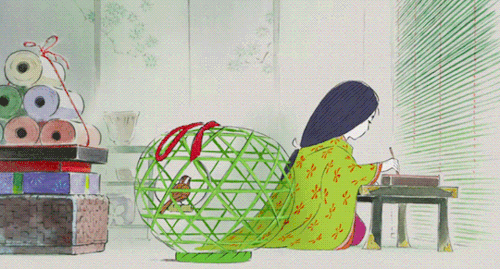
Like in Kaguya, the ohaguro set is presented as a symbol of oppression for Akemi. However, instead of being explicitly oppressed by outside forces like Akemi, Kaguya is instead pressured by her father's idea of happiness, as he internalizes society's idea of happiness as being the perfect princess. Throughout the film, Kaguya questions what it is all for and even counters against her governess that "a princess is not a human then!"
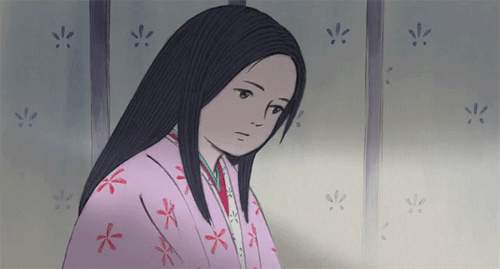
Princess Kaguya as a roadside flower. To be plucked in a moment of fancy, and neglected once savored and bored. Merely a trophy to be won and stowed away in a display cabinet.
The film explores what makes life worth living, by exploring the difference between humanity and moon people.
Filial piety. Fulfilling your own dreams through your offspring. Showing off achievements to relatives. accumulating merit.
Geisha and maiko in contrast to the Oiran of the red light district. Streetwalkers. Prostitution - the world's oldest profession.
Oda Nobunaga's younger sister in Nobunaga Concerto and Azumi.
Hypergamy. Tradition of men being adopted into the wife's household. The Fujiwara clan of the Heian period, who continuously married their women into the imperial family for generations. Attitudes around cheating and monogamy (Genji Monogatari).
The Fallacy of the Stereotypical Asian woman
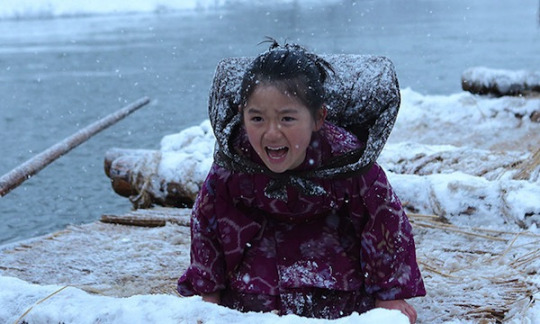
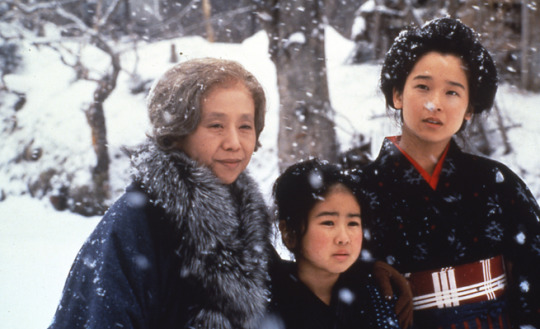
Oshin - Resilience and endurance.
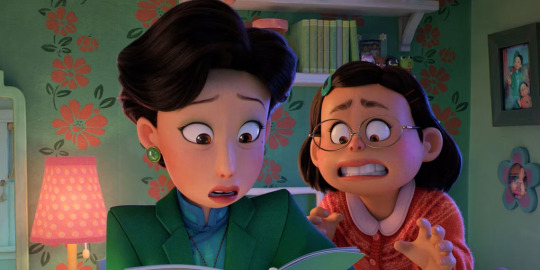
Asian women as firecrackers. There's a reason why the stereotype of Tiger Mom even came to be, because Asian women and people in general are not weak and strictly submissive, although they are often mistaken as doormats.
Honne and tatemae
Yamato Nadeshiko
While writing about this, I ended up going on a tangent about Asian women, which you can read here: The Fallacy of the Stereotypical Asian Woman.
Gender roles in Genderbender
Kaze Hikaru
Ryou
Torikaebaya Monogatari, where a brother and sister in the Heian period is gender mixed at birth, to fulfil gender roles they're more "suited" for according to societal expectations. Another Heian period text about a guy who crossdresses as a woman to get close to a woman he has a crush on.
Gender fluidity has been the norm throughout most of history.
A wolf in sheep's clothing
I guess the show is more concerned about gender roles and patriarchy. I'm actually not all that concerned with historical accuracy, but I couldn't help but be thrown off by how it felt like vastly different time periods (and thus different expectations in terms of jidaigeki tropes) were meshed together. I still stand by that the show is a very (overseas Asian/) (Asian) American narrative, which made it uncanny how accurate it still was in terms of getting the artefacts etc. of a jidaigeki right. Sort of like a "wolf in sheeps clothing," though that doesn't make it a bad thing. For example, Akemi feels more like a Western suffragette, rather than an Asian feminist. Yet the ohaguro set etc. may be a reference to Isao Takahata's Princess Kaguya, which is about feminism.
The story came off as stereotypical to me. Yet it does get the artifacts and set dressing of a jidaigeki story right (surprisingly accurate at some points). I did cringe at some points or feel the uncanny valley, but again overall the show was engaging and enjoyable.
I've enjoyed other orientalist stories before, such as Kung Fu Panda and Avatar the Last Airbender. I've also enjoyed occidentalist stories like mohuan and isekai. Yet something with Blue Eye Samurai made me cringe sometimes. Comparing it to the others I've mentioned, perhaps it's because it's set in a more non-fantastical setting as opposed to a jianghu of sorts idk. Blue Eye Samurai is still entertaining though, and may be the start of a new genre.
It's hard to explain what it feels like for people who don't have the same cultural references, so here's an example of occidentalism. I noticed that when Genshin Impact (a Chinese game) released the new Fontaine region where they decided to mix Britain, Italy, France etc., which people claimed is just plain weird haha. But Fontaine has still been well received regardless it seems. On the other hand, I still cringe every time I see Senator Armstrong in Metal Gear Solid.
Historical references
Random, but here's a list of different artifacts and set dressings that appeared in the show. The little theatre play about the ronin and his wife uses kurogo (black clad actors) to manipulate the dolls, which was novel to see. Previously I've mostly watched kurogo being used to manipulate perspective such as in this Matrix Ping Pong skit and the Tokyo 2020 pictogram opening ceremony. Traditionally, Kurogo is used in Kabuki to create special effects and are supposed to be invisible to the audience.

Mizu's husband uses a naginata, which is basically a spear. Although also used by warriors in general, it was often used by women.

#Blue Eyed Samurai#Netflix#review#criticism#Azumi#Kung Fu Panda#Ghost of Tsushima#Avatar the Last Airbender#samurai#bushido#shinobi#ninja#onryo#gaijin#Sakoku#karma#revenge#uncanny valley#kurogo#feminism#orientalism#occidentalism#decolonization#blog
100 notes
·
View notes
Text





Bloodsport (1988) directed by Newt Arnold and starring Jean-Claude Van Damme
#Bloodsport (1988)#1988#80's#80s#Jean-Claude Van Damme#JCVD#bolo yeung#American martial arts action film#martial arts action film#my gif#gifs#my edit#gif#Bloodsport#Frank Dux (Van Damme)#Frank Dux#Van Damme#Chong li
83 notes
·
View notes
Photo
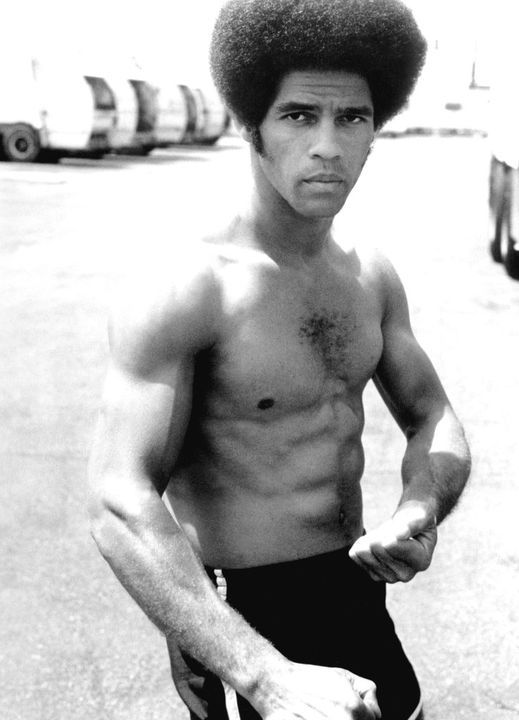
Jim Kelly was a prominent African-American martial artist and actor, best known for his roles in the "blaxploitation" films of the 1970s.
Kelly was born on May 5, 1946, in Paris, Kentucky, and grew up in San Diego, California. He began studying martial arts as a teenager and quickly excelled, earning a black belt in karate. He became a popular tournament fighter in the 1960s and 1970s and won numerous championships.
Kelly's big break in film came in 1973 when he was cast in the lead role in "Enter the Dragon," a martial arts movie starring Bruce Lee. Kelly's performance as Williams, a wisecracking, afro-wearing martial artist, made him an instant icon and helped to popularize the blaxploitation genre.
In the years that followed, Kelly starred in a number of other martial arts and action movies, including "Black Belt Jones," "Three the Hard Way," and "One Down, Two to Go." He also continued to compete in martial arts tournaments and worked as a martial arts instructor.
After retiring from acting in the 1980s, Kelly remained involved in martial arts and was active in promoting the sport and encouraging young people to get involved. He passed away on June 29, 2013, at the age of 67. Jim Kelly's contributions to the martial arts and film industries continue to be celebrated today.
#Jim Kelly#African American#Martial Artist#Actor#Blaxploitation#Enter The Dragon#Bruce Lee#Black Belt Jones#Three The Hard Way#One Down Two To Go#May 5 1946#June 29 2013#Age 67#Black History Month#Black History
281 notes
·
View notes
Text
If Cassandra Cain’s indigenous North American
It seems in the world of DC and Marvel stories, while there certainly are indigenous martial artists out there, it’s kind of hard to think for me to think of one who’s the equivalent to Cassandra Cain. Let alone without any supernatural ability to do what she does, which is largely trained and honed over the years. Marvel’s Echo/Maya Lopez might count but she merely has the supernatural ability to mimic human actions well, whereas Cassandra has been trained over the years to do a variety of martial arts. I guess it’s kind of easier to play into the Asian martial artist stereotype, if it weren’t for those Asian martial artist films, that it becomes a kind of point of reference for subsequent storytellers to draw from.
Not so much for well indigenous martial artists, though they certainly do exist. Well, in the world of fiction anything is possible. In theory, it is. In practise, it’s something of a mixed bag due to authorial biases and the like. While it is theoretically possible for Cassandra Cain to be of indigenous North American descent, it would have different implications than if she were of (presumably) Chinese descent. Considering the way she’s written over the years, with her being generally deferential to white people in some way that it plays into the submissive Asian stereotype. The fact that she learnt martial arts from her father whilst being half-Asian herself does play into this a lot, whereas if she learnt martial arts from Chinese-American peers then she’d pretty much be connected to that culture.
It would look different if Cass herself was part-indigenous and if Lady Shiva were indigenous, because it would seem as if David Cain has contempt for her as a person and her mother’s culture, considering the history of Indian Boarding Schools and the like in Anglophone North America. So changing the character’s ethnicity does have profound implications if such a story were to be told the same way, it would affect the way we see and conceive of such characters. Thus Cassandra Cain wouldn’t be read and written the same way if she was Native American, so instead of coming off as another iteration of the submissive Asian meme, she’d be a character born into her father’s contempt for her and her own ethnicity. It makes more sense if you have some knowledge of Native American history where it wouldn’t be regarded the same way.
So the same character wouldn’t be conceived and regarded the same way if she’s Native American, considering the different implications for each meta-ethnicity. In Cass’s case, if she was Native American then she’d be made to assimilate into her father’s culture instead. So it would be kind of triggering to Native American readers if she was Native American herself, something that wouldn’t happen as she’s usually written to be, which is to be Asian American.
7 notes
·
View notes
Text
Showdown in Little Tokyo

Summary: Japan-raised American cop Chris Kenner (Dolph Lundgren) is partnered with Japanese-American cop Johnny Murata (Brandon Lee) and bond over a love of martial arts in time for an investigation into the yakuza.
Funnier than and as OTT as expected for early 1990s actioner. Also well-balanced two-hander; Lee almost runs away with film.
Rating: 3.75/5
Photo credit: azmovies.net
#showdown in little tokyo#1991#mark l lester#action#comedy#Dolph Lundgren#Brandon Lee#3.75#film reviews#film review#twenty-words-or-less#twol
7 notes
·
View notes
Text
On September 6, 1985, American Ninja debuted in the United Kingdom.

#american ninja 1985#american ninja#sam firstenberg#steve james#action movies#martial arts#ninja#1980s movies#cannon films#1980s cinema#tcm underground#movie art#art#drawing#movie history#pop art#modern art#pop surrealism#cult movies#portrait#cult film#united kingdom
0 notes
Text

IN CONVERSATION WITH DALLAS LIU
Actor Dallas Liu has quickly become one to watch in the entertainment industry through the diverse and dynamic characters he has brought to life on screen, and he isn’t slowing down anytime soon. On 22nd February, we’ll be able to see Dallas in Netflix’s highly anticipated live action adaptation of the beloved animated series ‘Avatar: The Last Airbender’. The series was also just renewed for a second and third season.
Dallas, we’ve just been able to watch you in Netflix’s live action adaptation of the beloved animated series ‘Avatar: The Last Airbender’. How exciting was it to get cast on this show? It was the experience of a lifetime.
How would you sum the first season for the fans of ‘Avatar’? They got to see a lot of classic scenes and characters from the animated series, but also a few changes that I think they can be really excited about.
In the series, you portray the iconic Prince Zuko. Tell us more about your character in this adaptation. What excites you the most about portraying him? He’s a child who thinks he’s a man. He has a one-track mindset and can’t see anything outside of it. Zuko will go to great lengths to capture the Avatar. All of the emotions that Zuko gets to go through excite me more than anything. I loved him in the animated series, so hopefully fans are able to enjoy my portrayal of him in the live-action.

If you had to choose your favorite role that you’ve portrayed so far, which one would that be and why? It’s got to be Prince Zuko. The writers and directors in the show truly gave me so much to work with, so as an artist, that’s all I can ask for. My co-workers were amazing and the entire project was bigger than anything I could have ever imagined.
What made you passionate about the craft of acting? I would have to say it came from my love of films. What had always stuck out to me in films were the actors and actresses. I felt that their performances were what had always entertained me the most.
Before acting, you were a top competitor in martial arts, especially in Japanese Shotokan and even competed in the NASKA (North American Sport Karate Association). Why was martial arts a sports discipline that attracted you the most? I had a huge interest in combat and action as a kid. I loved watching anything related to it on TV or in movies, so naturally my parents put me in martial arts as they felt there was a lot to be learned from it.


#dallas liu#interview#photoshoot#numero netherlands#natla#atla#netflix avatar#netflix atla#avatar the last airbender#avatar netflix#atla netflix
14 notes
·
View notes